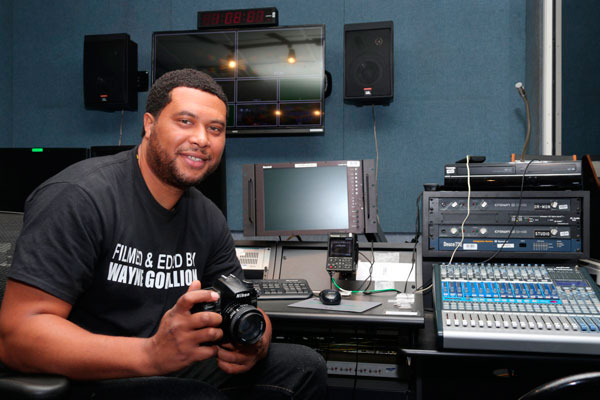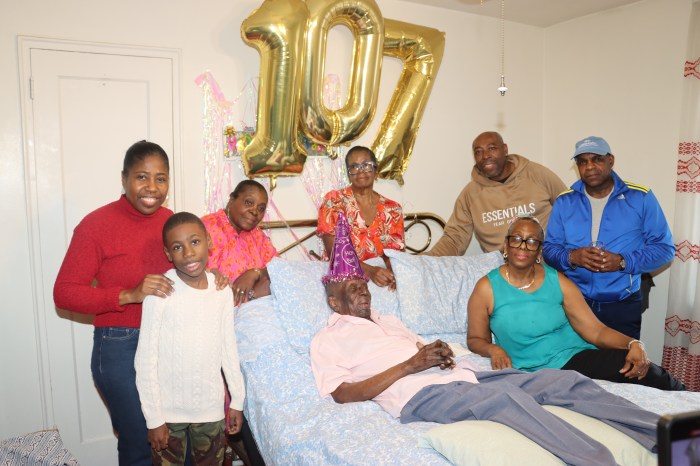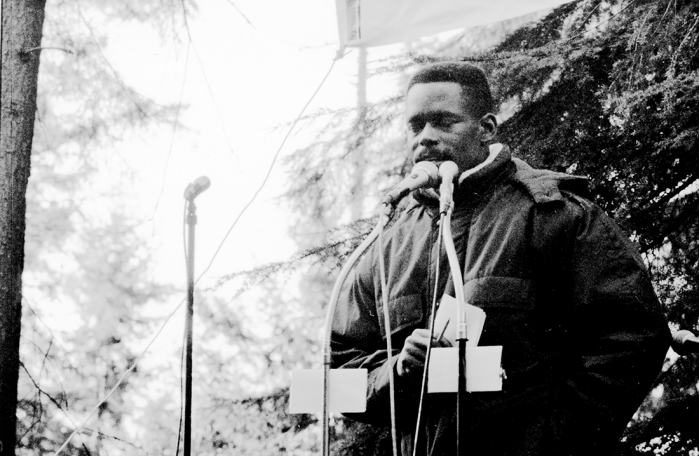Big sounds and big drums.
On formal occasions, sounds of drums beating might be heard on Union Island — one of the islands comprising the nation of St. Vincent and the Grenadines. Groups of people congregate with their instruments and play drums and sing songs passed down from their ancestors. It is a tradition that has been practiced since the early 1900’s and one filmmaker is sharing the rich musical history of the islands drum-playing in his documentary film.
“The idea came to me when I left New York with my uncle for a memorial service for a relative,” said Wayne Gomillion, filmmaker and creator of the film “Big Drum.”
“I went with my cameras and equipment prepared to record and document video for my family members who couldn’t make it. I didn’t know what I was going to see. But it was a three-day celebration — praise, service and then big drum.”
“Big Drum” as he describes, focuses on an event of the same name. It is traditional drum playing, which began on Union Island in 1910 as a ceremonious gathering, in which participants dance and sing to the beat of the drums. The tradition is kept alive during weddings, funerals, and other celebratory or mourning occasions.
Gomillion did not intentionally set out to make a film, but upon landing on Union Island, he began capturing video of the locals singing and playing the drums, and decided to use the footage for a film that he could share with a broader audience. He pulled out his camera and recorded everything he saw, recording a total eight hours of film. He had no idea that he would be leaving the island making a film, but he knew it was a story he wanted to share after not understanding it for a long time.
“I knew about it as a kid but I didn’t understand,” said Gomillion. “When I started to put it into perspective — I saw the importance of it.”
The film captures three days worth of big drum. And even as a Brooklyn native of Vincentian descent, Gomillion says despite his ties to the culture he chose to amplify the voices of people native to the island. The 13-minute film narrated by a local resident takes viewers through a timeline of the tradition.
“I didn’t want to do my own narration because I didn’t want to interject,” said Gomillion. “I rather have someone who knows everything about the tradition.”
As a producer for Brooklyn Information and Culture (BRIC), and a graduate in television and radio, Gomillion has plans to create more documentary films. Having also worked in music, his first documentary-like film was an interview with singer and songwriter Karen Wheeler, from the British pop group, “Soul II Soul.” His interview with her was an opportunity of a lifetime due to the rarity of the singer’s interviews, he says.
“Karen Wheeler from ‘Soul II Soul’ was the first person I did a documentary on,” said Gomillion.
Now working more on filming after finding his passion, he says the audience reactions to both showings drew a strong positive response from viewers.
“At the first screening people were touched by the footage — it allowed them to reconnect,” said Gomillion. “Pretty much the same thing happened again at the second screening, and a lot of people weren’t sure that this type of ceremony still takes place.”
Gomillion wants viewers to see the film, note the rich stories in their own families and cultures and create stories about them.
“It’s important to document your family,” said Gomillion. “Often we look to other cultures to validate us, and we overlook ourselves. People won’t pay attention until someone else deems it valid or important, when it already is important.”
By the end of the year, Gomillion hopes to make additions to his film by adding more footage, and increase the runtime to 45 minutes. A clip of the film can be accessed on www.wayne



























